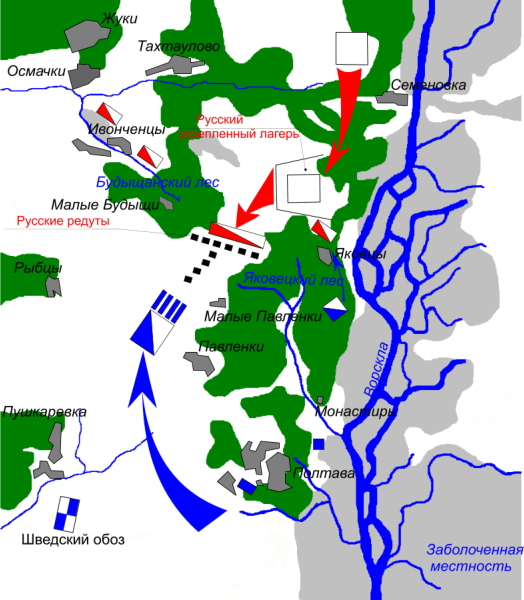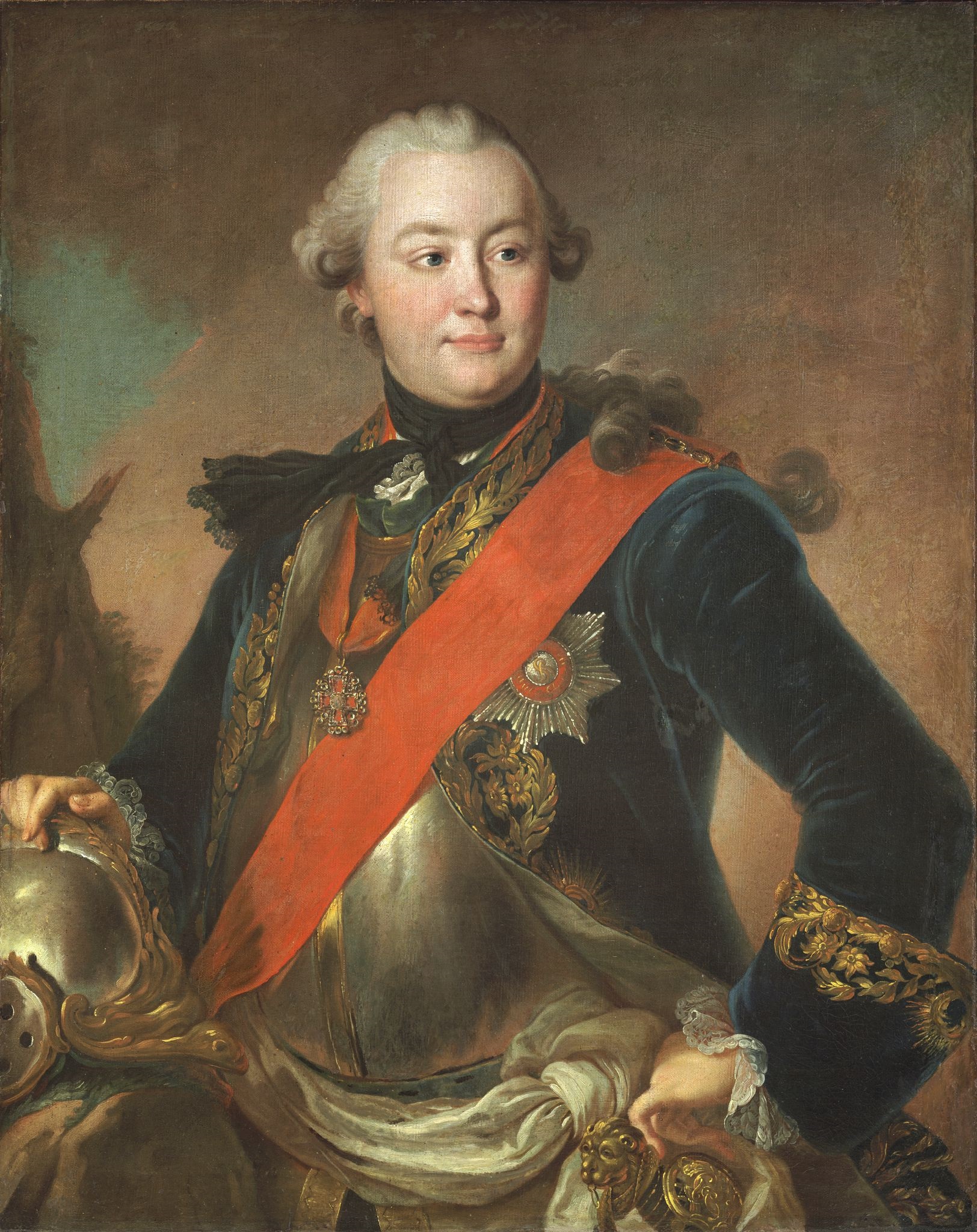|
Carl-Ludwig Christinek
Carl-Ludwig Christinek (1730/1732–c.1794) was a Russian painter. Christinek was born to German parents and was initially taught in German, but lived his whole life in Russia. He painted primarily portraits of Russian aristocracy. He settled down in St. Petersburg, where he died, c.1794. Among some of his notable works was a mosaic of the ''Battle of Poltava'', produced at the Imperial Porcelain Factory, Saint Petersburg. In 1785, he did a portrait of the architect Yury Felten. Portrait gallery File:Портрет Павла Петровича, кисти Карла Людвига Кристинека, 1760-е.jpg, Paul I File:Alexey Bobrinsky by C.L.Christinec (c.1770, Hermitage).jpg, Alexei Bobrinsky File:Carl Ludwig Christineck 018.jpg, Teresa Ivanovich Schnee File:Semen Ivanovich Mordvinov.jpg, Semyon Ivanovich Mordvinov File:Carl Ludwig Christinec 007.jpg, Anna Andreyevich Muravyova File:G.Orlov by Chrisitnek (1768).jpg, Grigory Grigoryevich Orlov Prince Grigory Grigo ... [...More Info...] [...Related Items...] OR: [Wikipedia] [Google] [Baidu] |
Battle Of Poltava
The Battle of Poltava; russian: Полта́вская би́тва; uk, Полта́вська би́тва (8 July 1709) was the decisive and largest battle of the Great Northern War. A Russian army under the command of Tsar Peter I defeated a Swedish army, under the command of Carl Gustaf Rehnskiöld. The battle put an end to the status of the Swedish Empire as a European great power, as well as its eastbound expansion, and marked the beginning of Russian hegemony in Northern Europe. During the course of six years in the initial stages of the war, King Charles XII and the Swedish Empire had defeated almost all participants in the anti-Swedish coalition, which initially consisted of the Polish-Lithuanian Commonwealth, Denmark-Norway and the Tsardom of Russia. The latter under Tsar Peter I's rule was the only one still undefeated. Charles XII therefore chose to invade Russia in the autumn of 1707 and march towards Moscow with a large Swedish army. However, the campaign w ... [...More Info...] [...Related Items...] OR: [Wikipedia] [Google] [Baidu] |
Imperial Porcelain Factory, Saint Petersburg
The Imperial Porcelain Factory (russian: Императорский Фарфоровый Завод, Imperatorskii Farforovyi Zavod), also known as the Imperial Porcelain Manufactory (abbreviated as IPM), is a producer of hand-painted ceramics in Saint Petersburg, Russia. It was established by Dmitry Ivanovich Vinogradov in 1744 and was supported by the Russian tsars since Empress Elizabeth. Many still refer to the factory by its well-known former name, the Lomonosov Porcelain Factory. History 18th century Attempts to reveal the secret of hard paste true porcelain-making had expanded to Russia since the visit of Peter the Great to Saxony in 1718; there, he saw Meissen porcelain at the Dresden court. Dmitry Ivanovich Vinogradov, a talented mining engineer who studied metallurgy at Freiberg, Saxony, invented the formula for the first porcelain manufactory in Russia, established in 1744 by order of Empress Elizabeth, daughter of Peter the Great, to "serve native trade and nativ ... [...More Info...] [...Related Items...] OR: [Wikipedia] [Google] [Baidu] |
Yury Felten
Yury Matveyevich Felten (russian: Ю́рий Матве́евич Фе́льтен, german: Georg Friedrich Veldten) (1730–1801) was a Russian Imperial architect who served at the Empress's Catherine the Great court. Yury Felten was born Georg Veldten, into a family of German immigrants to Russia. His father worked for the Russian Academy of Sciences. Young Yury Felten studied on a Russian State scholarship at the Gymnasium of the Academy of Sciences. In 1744, after the death of his father, Felten moved to Germany. From 1744 to 1749 he studied at Tübingen University, but his financial and personal situation prompted him to move back to St. Petersburg. Felten wrote a letter to Empress Elizabeth, and she extended her hospitality and a scholarship, so he completed his studies at the Russian Academy, graduating in 1752 as an architect. From 1752 to 1762 Felten worked as assistant to the celebrated architect Bartolomeo Rastrelli during the construction of the Winter Palace and ot ... [...More Info...] [...Related Items...] OR: [Wikipedia] [Google] [Baidu] |
Grigory Grigoryevich Orlov
Prince Grigory Grigoryevich Orlov (russian: Князь Григорий Григорьевич Орлов; 6 October 1734, Bezhetsky Uyezd – 13 April 1783, Moscow) was a favourite of the Empress Catherine the Great of Russia. He became a leader of the 1762 coup which overthrew Catherine's husband Peter III of Russia and installed Catherine as empress. For some years he was virtually co-ruler with her, but his repeated infidelities and the enmity of Catherine's other advisers led to his fall from power. Overthrow of Peter Orlov was the son of Gregory Orlov, governor of Great Novgorod. He had a younger brother Alexei Grigoryevich Orlov who would equally gain military and political prominence in Russia. Grigory Orlov was educated in the corps of cadets at Saint Petersburg, began his military career in the Seven Years' War, and was wounded at Zorndorf. While serving in the capital as an artillery officer, he caught the fancy of the then Grand Duchess Catherine Alekseyevna, an ... [...More Info...] [...Related Items...] OR: [Wikipedia] [Google] [Baidu] |
Adam Olsufiev
Adam Vasilyevich Olsufiev (January 27, 1721 – July 8, 1784) was a figure in the Russian Enlightenment, a lover of literature, the patron of opera and theaters, Cabinet Minister and State Secretary of Empress Catherine II. He ended his career as a senator with the rank of Actual Privy Councilor. Grandfather of Count Vasily Olsufiev. Biography Came from the Olsufievs. The son of Ober-Hofmeister Vasily Dmitrievich and his wife Eva Ivanovna, née Golender, who was Swedish by birth. At baptism, he received the name Vasily, but at the behest of Emperor Peter I, who wished to be godfather, but who was late to his baptism, was named by a name uncommon among the Russians, Adam. Therefore, Adam Vasily had two names, but on all acts and documents he was signed by Adam. At the age of seven, he lost his father and remained in the arms of his mother, who soon after the death of her husband remarried Colonel Wenzel. Wenzel took up his education and on February 17, 1732, identified him in the ... [...More Info...] [...Related Items...] OR: [Wikipedia] [Google] [Baidu] |
1732 Births
Year 173 ( CLXXIII) was a common year starting on Thursday (link will display the full calendar) of the Julian calendar. At the time, it was known as the Year of the Consulship of Severus and Pompeianus (or, less frequently, year 926 ''Ab urbe condita''). The denomination 173 for this year has been used since the early medieval period, when the Anno Domini calendar era became the prevalent method in Europe for naming years. Events By place Roman Empire * Gnaeus Claudius Severus and Tiberius Claudius Pompeianus become Roman Consuls. * Given control of the Eastern Empire, Avidius Cassius, the governor of Syria, crushes an insurrection of shepherds known as the Boukoloi. Births * Maximinus Thrax ("the Thracian"), Roman emperor (d. 238) * Mi Heng, Chinese writer and musician (d. 198) Deaths * Donatus of Muenstereifel, Roman soldier and martyr (b. AD 140 Year 140 ( CXL) was a leap year starting on Thursday (link will display the full calendar) of the Julian cale ... [...More Info...] [...Related Items...] OR: [Wikipedia] [Google] [Baidu] |
1792 Deaths
Year 179 ( CLXXIX) was a common year starting on Thursday (link will display the full calendar) of the Julian calendar. At the time, it was known as the Year of the Consulship of Aurelius and Veru (or, less frequently, year 932 ''Ab urbe condita''). The denomination 179 for this year has been used since the early medieval period, when the Anno Domini calendar era became the prevalent method in Europe for naming years. Events By place Roman empire * The Roman fort Castra Regina ("fortress by the Regen river") is built at Regensburg, on the right bank of the Danube in Germany. * Roman legionaries of Legio II ''Adiutrix'' engrave on the rock of the Trenčín Castle (Slovakia) the name of the town ''Laugaritio'', marking the northernmost point of Roman presence in that part of Europe. * Marcus Aurelius drives the Marcomanni over the Danube and reinforces the border. To repopulate and rebuild a devastated Pannonia, Rome allows the first German colonists to enter territory c ... [...More Info...] [...Related Items...] OR: [Wikipedia] [Google] [Baidu] |
18th-century Painters From The Russian Empire
The 18th century lasted from January 1, 1701 ( MDCCI) to December 31, 1800 ( MDCCC). During the 18th century, elements of Enlightenment thinking culminated in the American, French, and Haitian Revolutions. During the century, slave trading and human trafficking expanded across the shores of the Atlantic, while declining in Russia, China, and Korea. Revolutions began to challenge the legitimacy of monarchical and aristocratic power structures, including the structures and beliefs that supported slavery. The Industrial Revolution began during mid-century, leading to radical changes in human society and the environment. Western historians have occasionally defined the 18th century otherwise for the purposes of their work. For example, the "short" 18th century may be defined as 1715–1789, denoting the period of time between the death of Louis XIV of France and the start of the French Revolution, with an emphasis on directly interconnected events. To historians who expand t ... [...More Info...] [...Related Items...] OR: [Wikipedia] [Google] [Baidu] |
Russian Male Painters
Russian(s) refers to anything related to Russia, including: *Russians (, ''russkiye''), an ethnic group of the East Slavic peoples, primarily living in Russia and neighboring countries *Rossiyane (), Russian language term for all citizens and people of Russia, regardless of ethnicity *Russophone, Russian-speaking person (, ''russkogovoryashchy'', ''russkoyazychny'') * Russian language, the most widely spoken of the Slavic languages * Russian alphabet * Russian cuisine *Russian culture *Russian studies Russian may also refer to: *Russian dressing *''The Russians'', a book by Hedrick Smith *Russian (comics), fictional Marvel Comics supervillain from ''The Punisher'' series *Russian (solitaire), a card game * "Russians" (song), from the album ''The Dream of the Blue Turtles'' by Sting *"Russian", from the album ''Tubular Bells 2003'' by Mike Oldfield *"Russian", from the album '' '' by Caravan Palace * Nik Russian, the perpetrator of a con committed in 2002 *The South African name fo ... [...More Info...] [...Related Items...] OR: [Wikipedia] [Google] [Baidu] |


